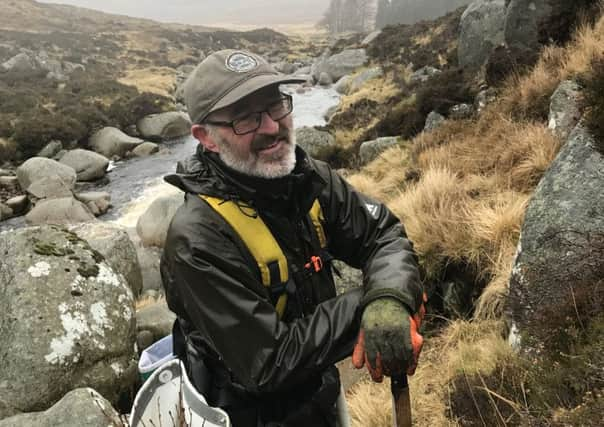One million trees to be planted in Scottish Highlands in effort to restore wild salmon stocks


The £5.5 million project, led by the River Dee Trust conservation charity with support from Dee District Salmon Fishery Board, will be the biggest nature restoration scheme to be carried out in the region.
It aims to recreate areas of the Scottish landscape that have been lost for 2,000 years, which will in turn help local wildlife to thrive.
Advertisement
Hide AdAdvertisement
Hide AdThe groups have already planted more than 200,000 trees along tributaries of the Dee in a bid to combat rising river temperatures, which adversely affect the survival of young salmon.
A fundraising appeal has been launched, with the aim of doubling the current rate of planting to see a total of one million trees planted within the next 15 years.
The main species being used are Scots pine, alder, rowan, willow, birch and aspen, which would have been common in the landscape millennia ago.
Conservationists say restoring the woodlands will provide food and shelter for a wide range of wildlife species, as well as benefiting fish.
River Dee director Dr Lorraine Hawkins has warned the survival of Scottish salmon is under significant threat, with massive population crashes in recent years.
“Atlantic salmon are now virtually extinct across their southern European range and are vanishing fast in the south of England,” she said.
“All the major Scottish salmon rivers have seen drastic declines. At current rates, we may have just 20 years to save the species.
“We know there are catastrophic losses at sea. Those factors must be tackled urgently. But we can take action now to give the young fish their best chance of survival before leaving their native rivers.
Advertisement
Hide AdAdvertisement
Hide Ad“Several current projects should produce immediate benefits. But we must also provide shade against more of the extreme temperatures we have been told to expect, while restoring a whole ecosystem that’s been degraded over many centuries. This will help our threatened salmon, and all wildlife will benefit.
“Of all the major Scottish rivers, the Dee is especially vulnerable to extreme temperatures because of its land use. We are determined to do everything we can to help nature help itself.”
The announcement comes as the Dee gets set for the launch of it 2020 fishing season on Saturday, with actor, singer and keen fisherman Robson Green performing the opening ceremony.
The tree-planting is part of a long-term strategy to restore the upper catchment of the Dee and its natural processes, with the aim of making the river as productive as possible and increasing the number of salmon smolts surviving to make the journey to sea.
Working together with landowners, the team’s mission is to do this in as natural a way as possible by creating the best possible environment and letting nature do the rest.
Efforts include some novel and ground-breaking techniques, including a scheme that involves putting the hooves cut off deer carcasses into the river to boost nutrient levels. The method is an adaption from an earlier study that showed salmon numbers doubled when dead fish were left to rot in the water.